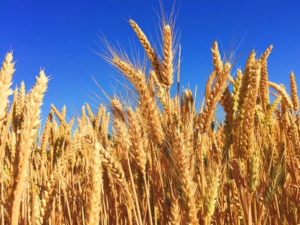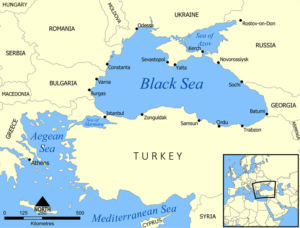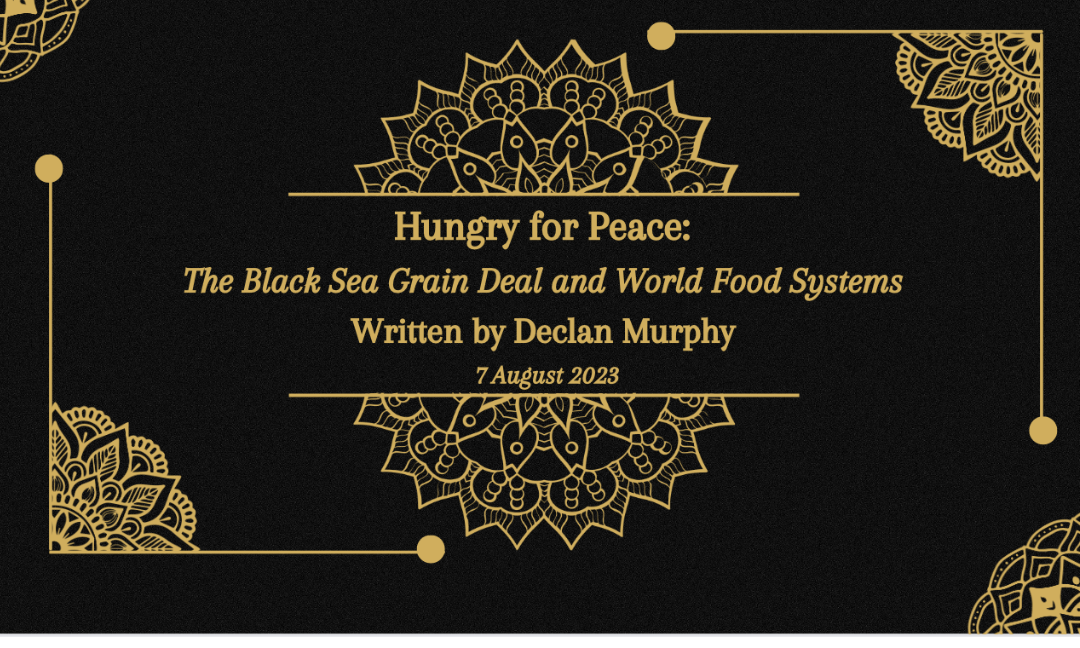Written by: Declan Murphy
Edited by: Declan Murphy
Designed by: Declan Murphy
Published by: Kiritika Rana
The past few years have plunged the world into a global food crisis, made increasingly worse by the biggest conflict Europe has seen since WWII right in its breadbasket, Ukraine. While there has been conflict between Ukraine and Russia since Russia’s annexation of Crimea in 2014, Russia’s full scale invasion in February of 2022 has interrupted Ukraine’s role as one of the leading suppliers of export grain and oilseeds around the world.

Ukraine is one of the world’s top food producers and agriculture is one its most valuable industries, including wheat, rapeseed, and drygoods like corn, barley and peas, as well as perishables like tomatoes and watermelons. It is not by accident that the sunflower is a well-known Ukrainian symbol – the country has long been the world’s top producer of sunflower seed, meal, and oil, and accounts for ⅓ of the world’s sunflower oil. According to the USDA and the UN, many places, particularly in Africa, Asia and the Middle East, rely on Ukrainian agricultural products annually.

The majority of Ukraine’s grain exports are shipped out of the country’s southern ports through the Black Sea and, via Turkey’s Bosphorus Strait, onto Africa and Asia. Since 2022, however, conflict with Russia has disrupted Ukrainian access to the Black Sea, leaving only the northern rail routes, an impractical method of moving tons and tons of grain in Europe.
In the summer of 2022, Turkey and the United Nations facilitated an agreement with Russia that would allow Ukraine to continue feeding the world through the Black Sea, while also allowing Russian food and fertiliser exports, as well. Around 33 million tons of Ukrainian grain were transported under this deal between the summer of 2022 and July of 2023. The majority of this grain has gone to low or middle income nations in the Global South.
This summer, Russia has rejected pleas to extend the deal, and has declared all ships, even non-Ukrainian civilian ones, who enter or leave Ukrainian harbours as potential military targets. Since the collapse of the deal, Russia has been bombing Ukraine’s southern port cities repeatedly, destroying over 100,000 tons of grain and food supplies in the cities of Odesa Oblast, the region most associated with Ukrainian shipping. Ukraine has hastily attempted to use river ports on the Danube along its border with Romania, but, those too, have drawn Russian bombs, and Russia has warned it may start mining the shipping lanes, including the humanitarian grain corridor, and could attack any ships attempting to export Ukrainian grains.
171 countries around the world import Ukrainian food products. The loss of Ukrainian grain will lead to increased hunger in some of the world’s poorest nations, as well as spur on price increases in all countries.
Unfortunately, the war in Ukraine is only one part of why world food stocks are struggling right now, albeit a major one.
The Russo-Ukrainian War and its resulting food and fertiliser shortage comes at a very bad time for global food systems. The Covid-19 pandemic had already negatively impacted supply networks around the world, and that, combined with the fuel crisis, had descended the world into an inflation spiral. The loss of millions of tons of grains have destabilised food prices even further. This has all been combined with the continuing effects of climate change. At various times, observers had hoped that India, Pakistan, the United States, and other countries could increase production to fill the void left by Ukraine, but these countries have been dealing with their own droughts, heatwaves, and flooding.
Ukraine’s agricultural minister, Mykola Solskyi, warned, “The world’s food security is once again in danger. If we cannot export food, the population of the poorest countries will be on the edge of survival.”
There is hope that the Black Sea grain deal will eventually be renewed, as many of Russia’s remaining allies and trade partners stand to suffer from the loss of Ukraine’s grain. Kenya called Russia’s rejection of the grain deal a “stab in the back”. China, one of Russia’s closest neighbours, has already been negatively affected by the grain crisis and could apply pressure on Russia to relent in the coming weeks.
“We need to renew the Black Sea Grain Initiative,” says David Beasley of the World Food Programme. “Ukraine alone feeds 400 million people around the world.”

However, even if the war ended today, the effects of wildfires, shelling, and the destruction of the Kakhovka dam (and the loss of the Kakhovka reservoir) means that Ukrainian agriculture won’t restabilize and revitalise for some years to come. Landmines cover approximately 30% of Ukrainian farmland, today, and their irrigation system has been totally disrupted. Tragically, the loss of the grain deal could also force Ukrainian farmers to reduce planting over the next few seasons, further reducing food supplies for the near future.
Nevertheless, Ukraine has made it clear that restoring its irrigation system and increasing its agricultural output is a major priority in its recovery plan, along with a new emphasis on green energy.
If you’d like to help, please check out the work being done by the World Food Programme, who are busy feeding families in Ukraine affected by the war, as well as the communities affected by the food crisis globally. There is still enough food to feed the world, but it’s going to cost more and more the longer the war continues, and organisations and donors need to dig deep to fill in that gap.
Sources
Aizenman, N. (2022, March 6). Russia’s war on Ukraine is dire for world hunger. But there are solutions. NPR.org.
Anon. (2022, April 12.) Global hunger crisis looms as war in Ukraine sends food prices soaring – Bulletin of the Atomic Scientists
Connelly, A.(2023, July 19). Russia’s nixing of Ukraine grain deal deepens worries about global food supply. NPR.
Husain, A. (2022, May 16). The Ukraine War is Deepening Global Food Insecurity — What Can Be Done? | United States Institute of Peace
Minagro Ukraine (2023).After the destruction of the Kakhovka Hydroelectric Power Plant the problem of irrigation will become the biggest one in the agriculture of southern Ukraine, – Mykola Solskyi. Minagro.gov.ua.
Minagro Ukraine (2023). Ukraine presents ambitious plan to increase grain and oilseed production to 150 million tonnes in 10 years. Minagro.gov.ua.
Top Lead (2023). War in UA Environmental Impact. Top Lead Projects.
United Nations. (2023). Black Sea Grain Initiative | Joint Coordination Centre | United Nations
USDA. (April 2022.) Ukraine Agricultural Production and Trade. Foreign Agricultural Service U.S. Dept of Agriculture.
Wintour, P., & editor, P. W. D. (2023, July 20). What was the Black Sea grain deal and why did it collapse? | Ukraine | The Guardian
World Food Programme. (2023). Homepage | World Food Programme. WFP
World Food Programme (2023). War in Ukraine: How a humanitarian tragedy fed a global hunger crisis | World Food Programme. Www.wfp.org.
Yale E360. (2023.) Destruction of Ukrainian Dam Has Dried Up a Vital Irrigation Network – Yale E360

